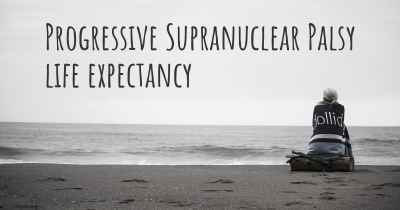What is the history of Progressive Supranuclear Palsy?
When was Progressive Supranuclear Palsy discovered? What is the story of this discovery? Was it coincidence or not?

Progressive Supranuclear Palsy (PSP) is a rare neurodegenerative disorder that was first described in the medical literature in the early 1960s. It was initially referred to as "Steele-Richardson-Olszewski syndrome" after the three doctors who independently reported cases of the disease.
The history of PSP begins with the identification of its characteristic symptoms and pathological features. In 1963, Dr. John Steele, a British neurologist, published a paper describing a group of patients who exhibited a unique combination of symptoms, including postural instability, vertical gaze palsy, and progressive dementia. Around the same time, Dr. Jerzy Olszewski, a Polish neurologist, and Dr. John Richardson, an American neurologist, independently reported similar cases.
Over the following years, more research was conducted to understand the nature of this newly identified disorder. In 1964, Dr. William Brown and Dr. George Banker, American neurologists, coined the term "Progressive Supranuclear Palsy" to describe the condition. They highlighted the presence of supranuclear ophthalmoplegia, a specific eye movement disorder, as a key diagnostic feature.
Throughout the 1970s and 1980s, further studies were conducted to characterize the clinical and pathological aspects of PSP. Researchers discovered that PSP is characterized by the accumulation of abnormal tau protein in the brain, leading to the degeneration of certain brain regions. This finding helped differentiate PSP from other neurodegenerative disorders.
In the 1990s, advancements in brain imaging techniques allowed for better visualization of the structural changes associated with PSP. Magnetic Resonance Imaging (MRI) scans revealed atrophy in specific brain areas, including the midbrain and basal ganglia. These findings further supported the diagnosis of PSP and aided in distinguishing it from other similar conditions.
Since the turn of the century, research efforts have focused on understanding the underlying causes and developing potential treatments for PSP. Although the exact cause of PSP remains unknown, genetic and environmental factors are believed to play a role. Several genes have been identified as potential contributors to the development of the disease, but more research is needed to fully understand their involvement.
Currently, there is no cure for PSP, and treatment options are limited to managing the symptoms. Supportive therapies, such as physical and occupational therapy, can help improve mobility and quality of life for individuals with PSP. Ongoing research aims to develop targeted therapies that can slow down or halt the progression of the disease.
In conclusion, the history of Progressive Supranuclear Palsy spans several decades of medical research and discovery. From its initial description as Steele-Richardson-Olszewski syndrome to the identification of its characteristic symptoms, pathological features, and genetic factors, our understanding of PSP has significantly evolved. While there is still much to learn about this complex disorder, ongoing efforts offer hope for improved diagnosis, treatment, and ultimately, a better quality of life for those affected by PSP.
Posted Aug 12, 2017 by Diana Sanders 2000
Posted Sep 24, 2021 by matina 2610
Posted Nov 8, 2017 by Maria Veronica Ortiz Solís 2000








